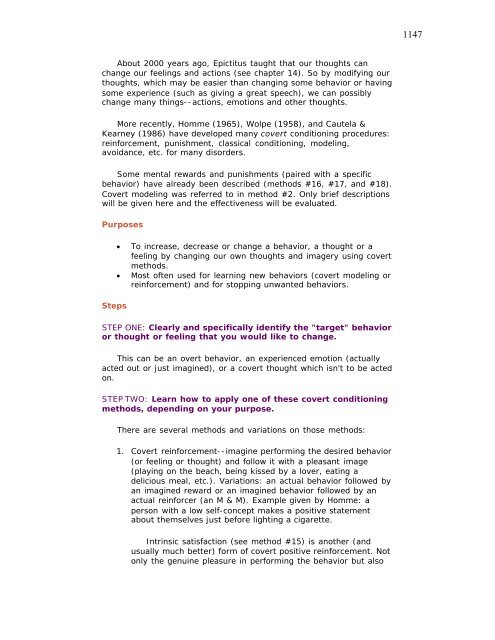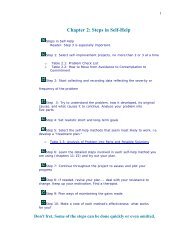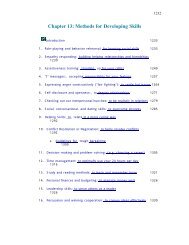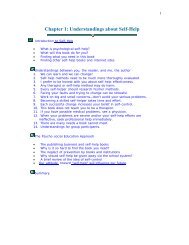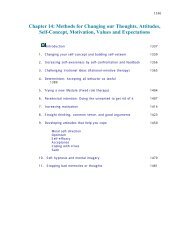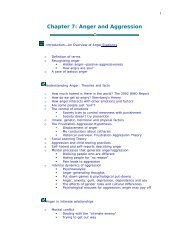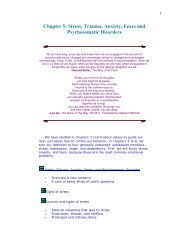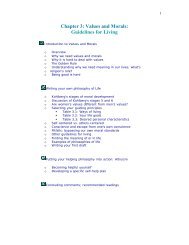Methods for Changing Behaviors - Psychological Self-Help
Methods for Changing Behaviors - Psychological Self-Help
Methods for Changing Behaviors - Psychological Self-Help
Create successful ePaper yourself
Turn your PDF publications into a flip-book with our unique Google optimized e-Paper software.
About 2000 years ago, Epictitus taught that our thoughts can<br />
change our feelings and actions (see chapter 14). So by modifying our<br />
thoughts, which may be easier than changing some behavior or having<br />
some experience (such as giving a great speech), we can possibly<br />
change many things--actions, emotions and other thoughts.<br />
More recently, Homme (1965), Wolpe (1958), and Cautela &<br />
Kearney (1986) have developed many covert conditioning procedures:<br />
rein<strong>for</strong>cement, punishment, classical conditioning, modeling,<br />
avoidance, etc. <strong>for</strong> many disorders.<br />
Some mental rewards and punishments (paired with a specific<br />
behavior) have already been described (methods #16, #17, and #18).<br />
Covert modeling was referred to in method #2. Only brief descriptions<br />
will be given here and the effectiveness will be evaluated.<br />
Purposes<br />
Steps<br />
· To increase, decrease or change a behavior, a thought or a<br />
feeling by changing our own thoughts and imagery using covert<br />
methods.<br />
· Most often used <strong>for</strong> learning new behaviors (covert modeling or<br />
rein<strong>for</strong>cement) and <strong>for</strong> stopping unwanted behaviors.<br />
STEP ONE: Clearly and specifically identify the "target" behavior<br />
or thought or feeling that you would like to change.<br />
This can be an overt behavior, an experienced emotion (actually<br />
acted out or just imagined), or a covert thought which isn't to be acted<br />
on.<br />
STEP TWO: Learn how to apply one of these covert conditioning<br />
methods, depending on your purpose.<br />
There are several methods and variations on those methods:<br />
1. Covert rein<strong>for</strong>cement--imagine per<strong>for</strong>ming the desired behavior<br />
(or feeling or thought) and follow it with a pleasant image<br />
(playing on the beach, being kissed by a lover, eating a<br />
delicious meal, etc.). Variations: an actual behavior followed by<br />
an imagined reward or an imagined behavior followed by an<br />
actual rein<strong>for</strong>cer (an M & M). Example given by Homme: a<br />
person with a low self-concept makes a positive statement<br />
about themselves just be<strong>for</strong>e lighting a cigarette.<br />
Intrinsic satisfaction (see method #15) is another (and<br />
usually much better) <strong>for</strong>m of covert positive rein<strong>for</strong>cement. Not<br />
only the genuine pleasure in per<strong>for</strong>ming the behavior but also<br />
1147


